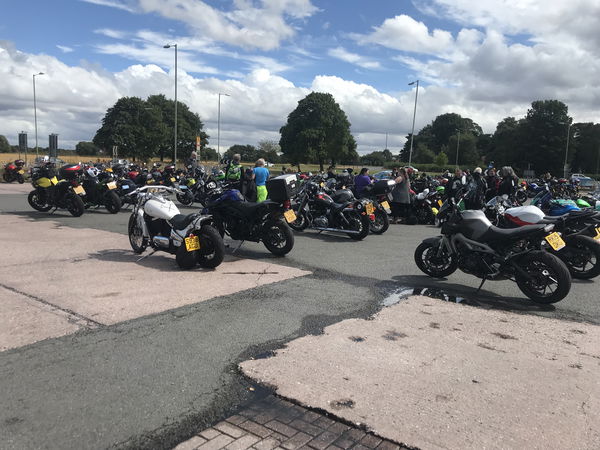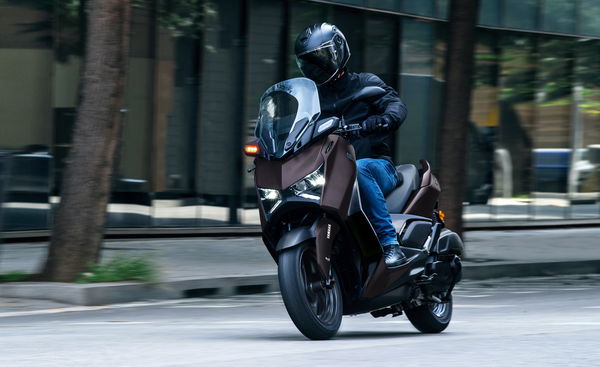Top 10 race bike liveries ever - that are not MotoGP!
With MotoGP testing showing us some pre-season liveries, it got us thinking about the best non-MotoGP liveries of all time...
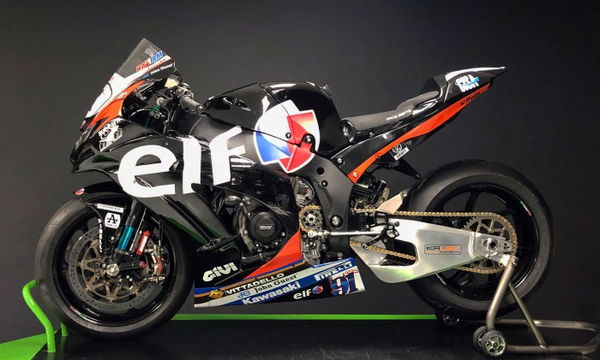
WITH all the hullaballoo over the new, 2021-season MotoGP bike race liveries being unveiled – no change, again, at Honda, not much to see at Suzuki, much of the rest a mess – it got us wondering: just what were the best race bike liveries – ever?
We’re not just talking the usual Marlboro Yamahas or Pepsi Suzukis here, no sirree. We’re looking further back – and wider, too – into the pre-MotoGP age, into endurance and AMA and even including historic British and Italian racers, too. Here’s our pick of what is admittedly a very subjective subject, in chronological order…
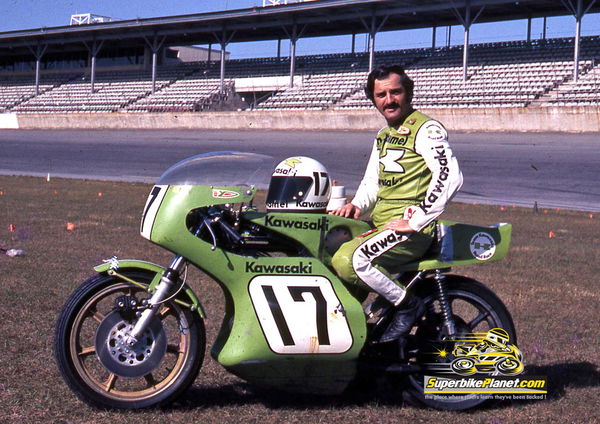
1973 Kawasaki H2R/Yvon DuHamel
Kawasaki’s ‘Team Green’ racers may be familiar, whether with Johnny Rea today in WSB of the likes of Anton Mang and Kork Ballington back in the late 1970s/early ‘80s on the dominant 250/350 tandem twins, but it all started with the truly mean H1 and H2R three-cylinder, two-stroke triples of the early-to-mid 1970s. Ridden also by the likes of Gary Nixon in the US and Mick Grant and Barry Ditchburn in the UK, this fearsome racer sprung to fame in the UK in 1973 in the hands of French-Canadian Yvon DuHamel when the ‘Flying Frog’ was top US scorer in the inaugural Transatlantic Trophy. The bike became famous for its dramatic green/white livery, matched by the riders’ leather, and in Daytona 200 trim featured a proper, aggressive-looking endurance filler. DuHamel’s race number 17, in American block print, became similarly famous and was later passed on to his AMA championship winning son, Miguel.

1973 John Player Norton monocoque/Peter Williams
No, not the much later, JPS-sponsored, ‘evil empire’ black and gold rotary racers of the likes of Trevor Nation and Steve Spray (although they’re probably worthy of a mention here, too). No, instead the early ‘70s, Norton Commando-based 750cc F1 racers of Dave Croxford and, particularly, late, great engineering and riding genius Peter Williams. The bikes, designed by Williams, reached their zenith in 1973 with the debut of the pioneering monocoque and famously winning that year’s F1 TT, weren’t just technical marvels, with their unique, arm-covering fairings, pioneering mag wheels and disc brakes and striking white/red/blue John Player livery (matched by equally striking rider leathers plus, in Williams’ case, his distinctive ‘W’ logo-ed Bell Star helmet), they looked like nothing else, too. Even the numbers were modern! British racers have never been so brilliant.
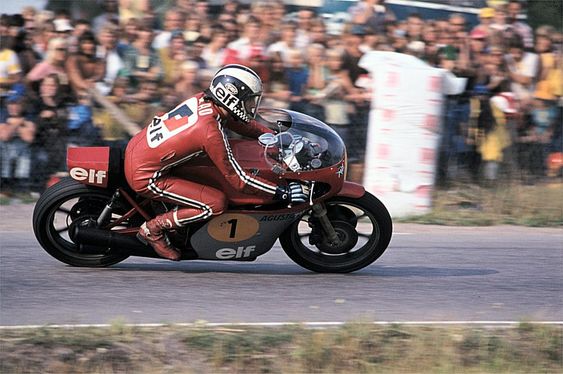
1974 MV Agusta 500-4/Phil Read
When people talk about the golden days of MV’s 500GP racers most immediately think of Hailwood and Agostini’s decade-long dominance from 1962. For us, however, the Italian four-stroke was at its best – and best-looking – when it won its final titles in the hands of Brit Phil Read in 1973 and, particularly, 1974. The successor to MV’s 500 triple, the new four debuted in 1973 with both Ago and Read before Read went on to win in a controversial season. But in 1974, with Ago gone to Yamaha, Read, on a further updated MV 4, with Elf sponsorship and complete with his iconic Premier helmet, won again on what was to be the final success for the Italian machine.
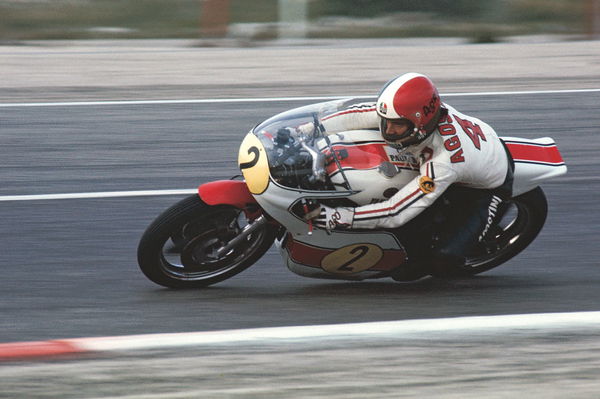
1974-80 Yamaha GP livery/Giacomo Agostini & Kenny Roberts
There’s no doubt that Yamaha’s corporate colours are among the most distinctive racing liveries of all – but which? Should that be the Yamaha Japan white/red combo, perhaps most iconically displayed by Agostini aboard the new TZ500 along with his red/white/green AGV lid. Or should that be the Yamaha USA yellow/black version, as most famously driven into the consciousness of Europeans by dominating 500GPs between 1978 and 1980? Maybe it doesn’t matter. Both are fabulous and, despite modern days Yamaha GP bikes being slathered with Monster and Petronas colours, Yamaha themselves still occasionally (and pleasingly) wheel out tribute bikes painted in commemorative colours, most recently by new Yamaha test rider Cal Crutchlow at the recent Qatar test.
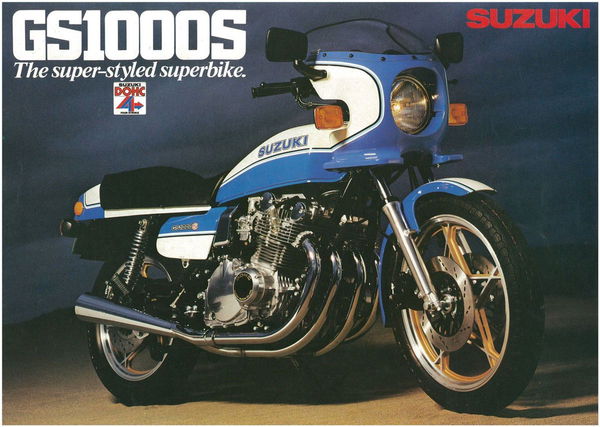
1979 Suzuki GS1000S AMA Superbike/Wes Cooley
Few Suzukis are as iconic as the 1979/80 GS1000S. A ‘sporty’ version of the GS1000E with distinctive fairing, extra dials, larger rear wheel and, most memorably of all, white/blue or white/red livery, it was a limited edition superbike and most desirable Japanese litre-bike of its day. Best of all, though, by also being used by the new Yoshimura Suzuki team in the increasingly-important AMA Superbike series, the WSB of its day, and ridden to championship glory by Wes Cooley ahead of Honda’s Freddie Spencer and Kawasaki’s Eddie Lawson, not one but twice, by repeating (in less distinctive colours) in 1980, it was also an immediate racing legend. That status was then cemented by the 1000S also being short-lived (in 1981 it was replaced by Suzuki’s new but less successful Katana) and exclusive with, reportedly, US dealers being restricted to one example each. Today it’s one of the most collectable Suzukis of all…
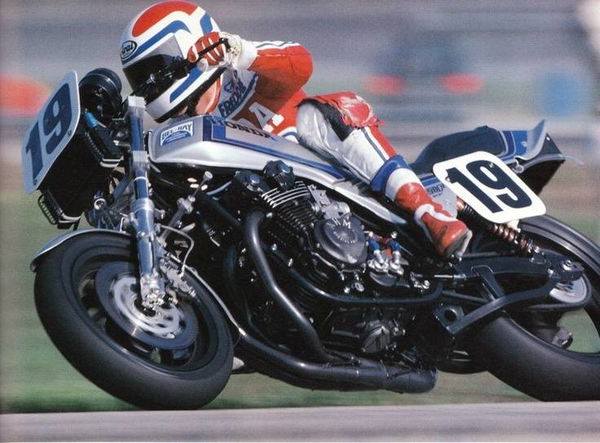
1982 Honda CB750/900F AMA Superbike/Freddie Spencer
For fans of AMA Superbike-style, ‘high-barred’ racers, more than one bike is worthy of mention here: the Suzuki 1000S stands out, as does Lawson’s ‘Team Green’ Z1000, which succeeded Cooley to a further two crowns in 1981 and 1982, but we also have to mention the 1979-82 Honda CB750F, then 900F, which helped propel Freddie Spencer to glory. Few bikes have been as beastly to ride. The 750 was taken to 1023cc and from 65 to 130bhp, winning Honda’s first Superbike race. Then, in 1982, as Fast Freddie prepared to commit himself wholly to European GPs, his silver, short-stroke ‘CB900’ complete with his iconic ‘19’ race number, blitzed Daytona forcing itself into legend. No ‘high-barred’ racer has proved so recognized – and replicated – since.

1985-1990 Yamaha France YZR500/Christian Sarron
We couldn’t mention Yamaha GP liveries without also pointing out one of surely the greatest of all – Sonauto/Gauloises. And by that we don’t mean the MotoGP version campaigned in the mid-late Noughties but that from back in the mid-1980s to mid-90s most famously ridden by Christian Sarron. The Frenchman moved up to the 500 class with satellite Yamahas in 1985 after finally winning the 250 crown the year before. Yet although winning that year’s German GP and 17 more podiums over the next five years he never won the biggest prize of all, grabbing a best championship position of third in 1989. We’ll let him off: His French racing blue bikes, with yellow detailing and matching helmet, were simply gorgeous. Sarron himself, meanwhile, finished off his two-wheeled racing career with a memorable win in the 1994 Bol d’Or aboard a blue YZF750, partnered by his brother Domenique

1991-1996 Kawasaki ZXR750R world endurance/Fogarty, Hislop, Rymer etc
Our mention of endurance racing prompts memories of surely the most iconic – and arguably successful – endurance racers, and one of the best looking, of all. Historically, the French go big on endurance racing (they created Le Mans and the Bol d’Or after all) and their home teams, Sonauto Yamaha, Honda France, SERT-Suzuki etc, take it more seriously than most. In the early Noughties, however, it was Kawasaki France, with its exquisitely-prepared ZXR750R’s turn to dominate, winning the championship four years in a row from 1991. For British fans, this reached a peak in 1992 when the team famously used British riders Steve Hislop, Carl Fogarty and Terry Rymer, the latter two famously winning at Le Mans. Best of all, though, in its striking green, white and red striped livery (British versions were green, white and BLUE), they looked fantastic, too.
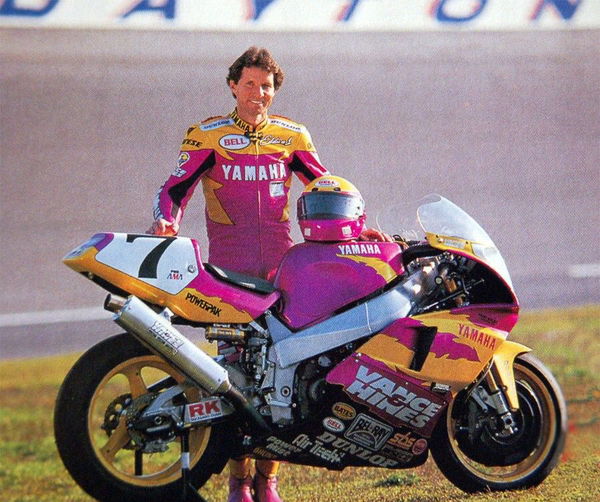
1993 Yamaha Vance & Hines YZF750/Eddie Lawson
For those of you who associate four-time 500cc GP world champion Eddie Lawson most with Marlboro Yamahas or, perhaps, his one win aboard the Rothmans-Honda NSR, think again. Arguably he best-looking race ride of all came later. After leaving Yamaha, Steady Eddie famously briefly rode fro Cagiva before retiring. Less well know, however, is that he made a one-off return to racing at the 1993 Daytona 200 on board a Vance & Hines-prepared Yamaha YZF750 – and won again. Yes, it’s purple and yellow, true 1990s madness explained only by the fact its was V&H’s colours at the time. But there’s something unforgettable about it, too. No? Oh…
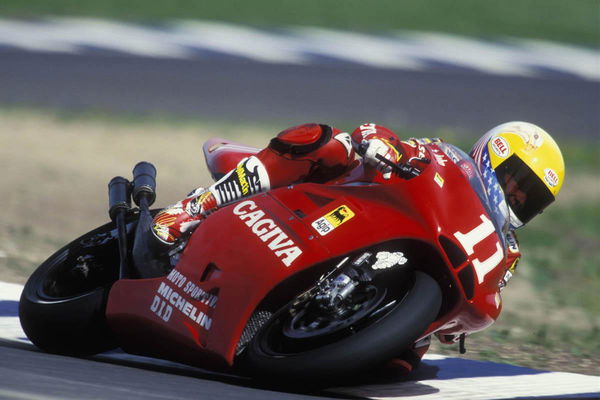
1994 Cagiva C594/John Kocinski
And, finally, after mention of Cagiva, proof that the simplest motorcycle racing liveries are also, often, the best – as proven by Cagiva’s simply gorgeous C594 of 1994. Although Cagiva’s 500GP campaign was never as successful as hoped, by the mid-1990s, its Yamaha-derived bikes, after early development work first by Randy Mamola then Eddie Lawson, were finally competitive. The 1994 C594s were ridden by no less than John Kocinski and Doug Chandler in a team managed by Giacomo Agostini and won first time out before Kocinski came third in the series. Best of all, though, in scarlet red with Agip sponsorship and an F1-alike air-intake they looked like two-wheeled Ferraris as any Italian GP bike should – are you listening Ducati and Aprilia?
